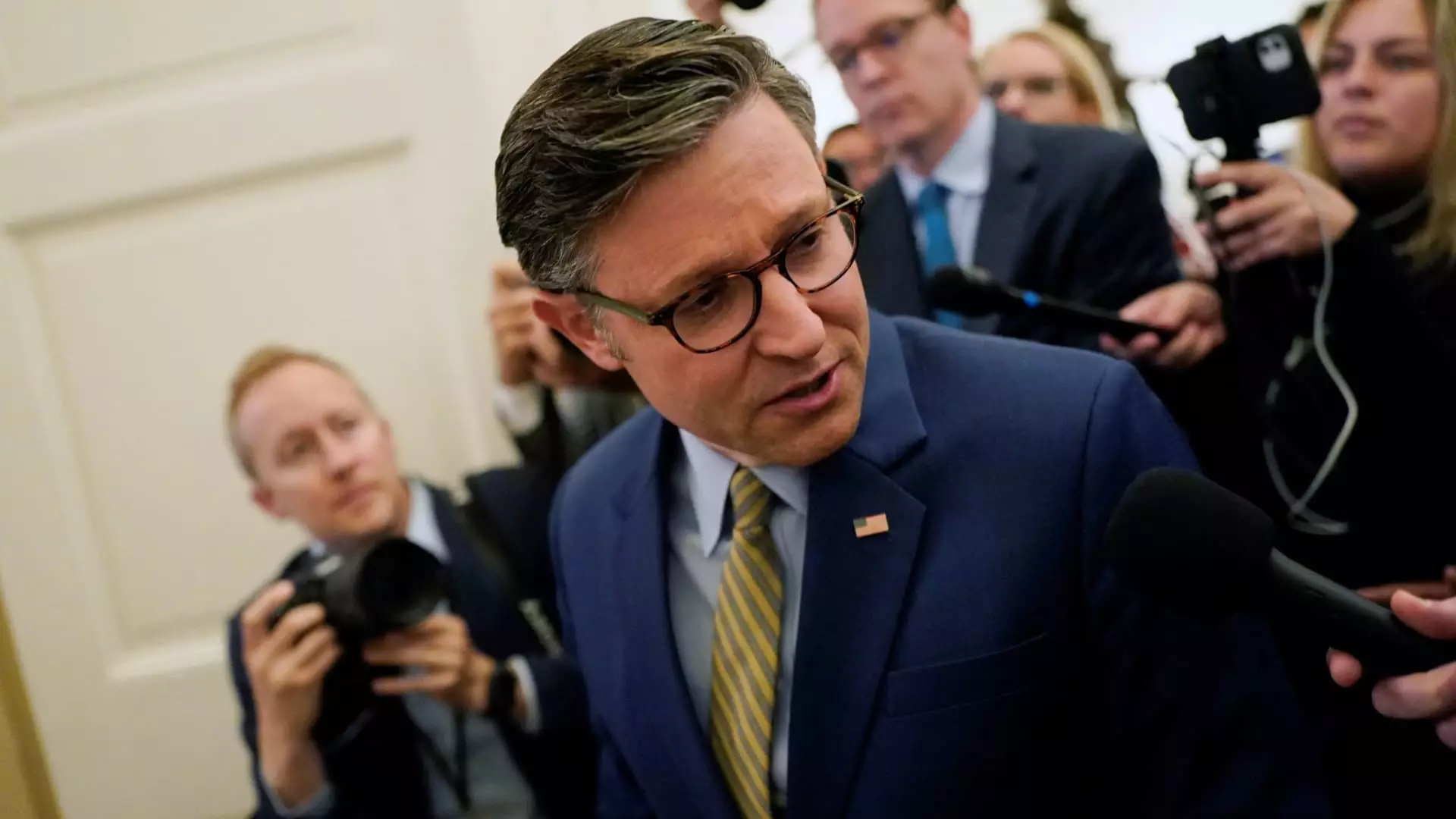House Speaker Mike Johnson has taken to the airwaves, championing what he calls the “big, beautiful bill,” heralding it as the largest spending cut in three decades. However, his enthusiastic proclamations mask a serious disconnect with fiscal realities. With a nonpartisan analysis from the Congressional Budget Office (CBO) warning of a potential $3.8 trillion increase in federal deficits over the next ten years due to the bill’s tax provisions, one must wonder: Is Johnson’s optimism a sign of visionary leadership or merely a convenient avoidance of inconvenient truths?
The Contradictions of Republican Economics
Even within his own party, skepticism reigns about the efficacy of the legislative package. Notable Republicans, including key fiscal conservatives like Senator Ron Johnson, have expressed reservations, fearing that the proposed spending cuts will either be ineffective or exacerbate the very deficits they aim to manage. The fundamental flaw in the Republican strategy lies in a persistent tendency to overlook the realities of fiscal sustainability. The notion that tax cuts and spending increases can coexist harmoniously in a non-inflationary economy is fundamentally flawed—one simply cannot foster economic growth on a shaky foundation of debt.
Optimism vs. Reality: The Economy’s True Colors
Speaker Johnson’s insistence that the bill will catalyze economic growth by boosting wages and fostering entrepreneurship feels almost naive. While the zeal to reignite U.S. manufacturing is commendable, the assumption that merely providing tax cuts will magically spur entrepreneurship ignores the multifaceted challenges businesses face—from supply chain disruptions to a labor market that is still rebounding from a pandemic. Economic growth is not summoned forth by simply waving a legislative wand; it requires robust, realistic policies grounded in the realities of market dynamics and consumer behavior.
The Intricacies of Legislative Manipulation
The passage of this gargantuan bill through the House came on the heels of intense pressure from former President Donald Trump, raising legitimate questions about the motivations driving such hasty action. Johnson’s call for Senate Republicans to delicately balance modifications to the bill reflects the precarious nature of his party’s majority. The reality is that maintaining party unity while addressing legitimate concerns over fiscal health demands more than just fervent half-truths. A flickering balance of power cannot be sustained on promises alone; it requires tangible accountability.
A Desperate Tug-of-War Within the GOP
Ironically, Johnson’s journey to secure passage of this bill encapsulates a larger internal struggle within the Republican Party. The tension between traditional fiscal conservatism and the populist tendencies that have taken center stage under Trump’s influence is palpable. As Johnson maneuvers through the legislative labyrinth, the stark contrast between his lofty aspirations and the grounded worries of his colleagues showcases a party grappling with its identity. Rather than pushing through a potentially damaging package cloaked in optimistic rhetoric, the GOP must confront the pressing need for a substantive discussion about fiscal responsibility.
In essence, the “big, beautiful bill” represents not a triumph but a troubling illustration of how economic policy can become enmeshed in political theater, where the blurring of optimistic rhetoric and fiscal realities leads to more than just prospective deficits—potential long-term repercussions for American economic stability.


Leave a Reply